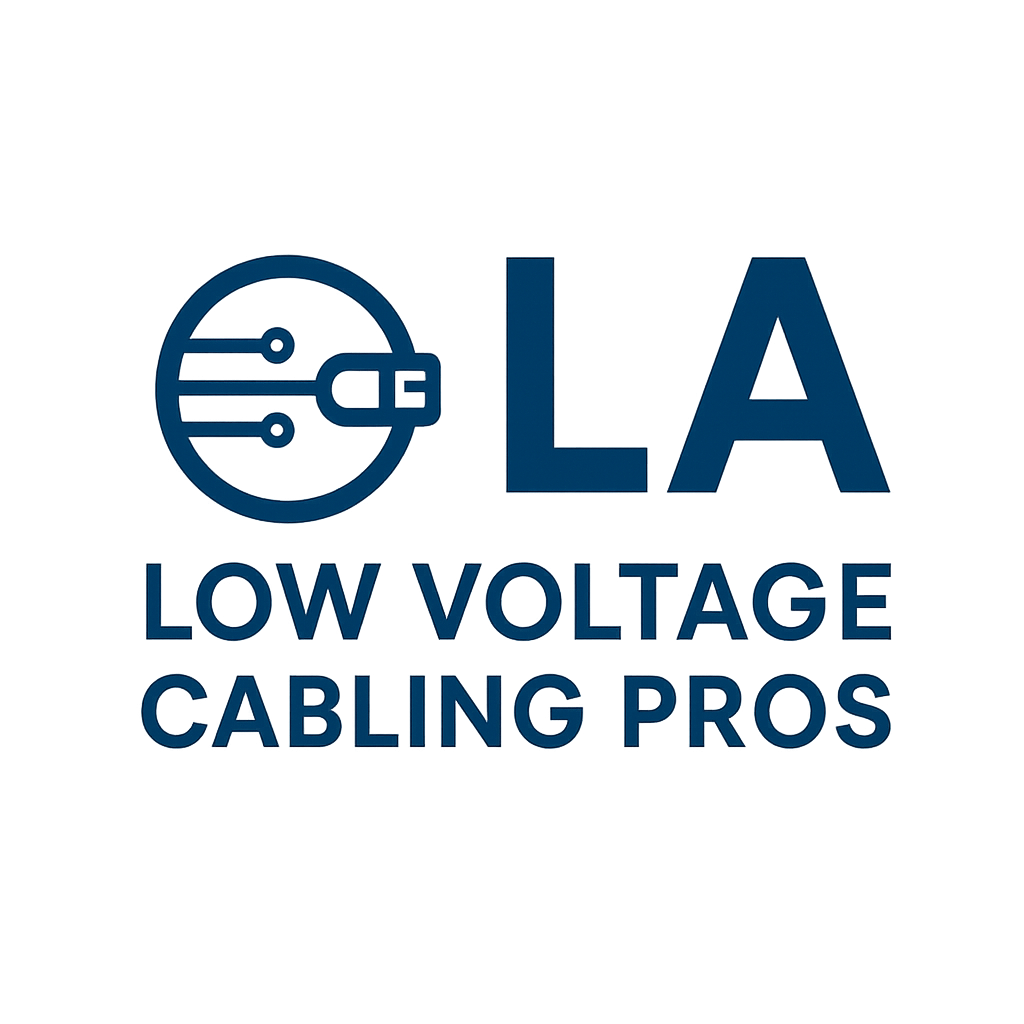Low Voltage System Integration: The Smart Way to Connect and Power Modern Buildings
In today’s connected world, every modern home, office, and commercial building relies on technology — from security cameras and lighting systems to Wi-Fi networks and intercoms. Behind all these systems is one essential foundation: low voltage system integration.
Whether you’re upgrading your business infrastructure or designing a new property, integrating low voltage systems ensures that everything works together efficiently, safely, and reliably. Our team of professional low voltage cabling experts in Los Angeles provides seamless system integration for both residential and commercial environments. Visit our main service page to learn more about the full range of cabling solutions we offer.
What Is Low Voltage System Integration?
Low voltage system integration refers to designing, wiring, and connecting systems that operate below 50 volts. These include essential technologies like:
- Security systems – CCTV, access control, and alarm systems
- Networking systems – Internet, Wi-Fi, and data cabling
- Audio-visual systems – Speakers, intercoms, and smart displays
- Lighting and automation – Smart lighting controls and energy management
- Fire and safety systems – Smoke detectors and emergency alarms
By integrating all of these systems under one unified network, you can manage your technology more efficiently — reducing clutter, improving performance, and saving on energy costs.
Why Low Voltage Integration Matters
Low voltage integration is more than just installing cables — it’s about creating a centralized, intelligent infrastructure that connects every system in your building.
Here’s why it matters:
- Efficiency: Centralized control reduces maintenance time and system conflicts.
- Safety: Lower voltage means reduced risk of electrical hazards.
- Cost savings: Energy-efficient wiring and smart automation reduce power consumption.
- Scalability: Easy to expand when you add new devices or upgrade technology.
- Future-proofing: Ready for integration with emerging IoT and smart technologies.
From office buildings in Los Angeles to residential developments across California, low voltage integration is key to modern, connected living.
Common Types of Low Voltage Systems
Here are some of the most common systems included in low voltage integration projects:
- Security and surveillance – IP cameras, door access systems, motion sensors
- Structured cabling networks – CAT6 or fiber optic cabling for data and communication
- Audio and video distribution – Multi-room sound systems, conference room AV setups
- Fire and life safety systems – Alarms, emergency lighting, and evacuation alerts
- Building automation – Smart thermostats, lighting control, and energy monitoring
Each of these components can operate independently, but when integrated, they communicate and function seamlessly.
The Benefits of Professional Low Voltage System Integration
Choosing a professional low voltage integrator ensures your project is designed and installed to meet both performance and safety standards.
Key benefits include:
- Custom design: Tailored systems that meet your property’s layout and purpose
- Code compliance: Meets state and national electrical standards
- Simplified control: Manage lighting, security, and networking from one interface
- Improved reliability: Professionally tested systems reduce downtime and maintenance
- Better organization: Fewer cables, cleaner installations, and easier troubleshooting
Whether it’s a corporate office, retail store, school, or luxury home, low voltage system integration enhances the way your technology works together. A well-designed integration plan should always account for scalability. Discover how you can start future-proofing your network cabling to keep up with evolving technology.
Where Low Voltage Integration Makes the Biggest Impact
Low voltage systems are used in nearly every type of building across California:
- Commercial buildings: Streamlined communication, networking, and security systems
- Educational facilities: Campus-wide connectivity and smart learning tools
- Healthcare centers: Reliable power and data systems for patient care and monitoring
- Multi-family housing: Integrated access control, intercoms, and video surveillance
- Smart homes: Voice-controlled lighting, entertainment, and home security
No matter the industry, integrated systems bring comfort, efficiency, and control to your environment.
Why Work with a Certified Low Voltage Integrator
In California, low voltage system integration must follow local codes and licensing requirements. Certified installers hold a C-7 Low Voltage Systems Contractor License, ensuring your project meets all safety and performance standards.
Working with a licensed professional guarantees:
- Proper design and documentation
- Quality materials and clean installation
- System testing and certification
- Long-term reliability and warranty support
Plus, local experts understand regional building codes, energy regulations, and the latest smart technology trends — giving you confidence that your system will perform perfectly from day one. If you’re planning to move or expand, our team also specializes in office relocation cabling services to ensure minimal downtime and full connectivity.
Plan Your Low Voltage Integration Project
Before starting your project, consider these steps:
- Assess your needs: Identify which systems you want to integrate — security, networking, AV, or automation.
- Design the infrastructure: Plan wiring routes, control hubs, and access points.
- Choose the right components: Select high-quality cables, switches, and hardware.
- Hire licensed experts: Ensure your installer is certified and experienced.
- Test and maintain: Schedule system testing and future maintenance to ensure long-term reliability.
A professional approach saves time, reduces risk, and delivers a cleaner, more efficient setup.
Upgrade to an Integrated Low Voltage System Today
If you’re ready to modernize your building with a connected, energy-efficient system, low voltage system integration is the solution. From improved security to smarter automation, integrating your low voltage systems offers the control, safety, and flexibility that today’s technology demands.
Contact your trusted low voltage integration specialists today to design a system that fits your property’s needs — and experience the benefits of a truly connected environment.
